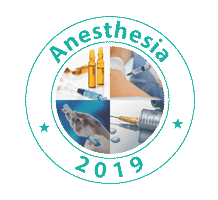Karol Szyluk
District Hospital of Orthopedics and Trauma Surgery, Poland
Title: Arthroscopic Bankart lesion repair with a suture anchor – long term results
Biography
Biography: Karol Szyluk
Abstract
Introduction & Aim: The shoulder joint is the most common dislocated joint in the human body. The aim of the study was to analyze late results of arthroscopic repair of Bankart lesions in patients with post-traumatic anterior shoulder instability.
Material & Methods: The study involved 92 patients (92 shoulders) after arthroscopic Bankart lesion repair, in patients with post-traumatic anterior shoulder instability and non-engaging Hill-Sachs lesion with a suture anchor. All patients were operated on in the lateral decubitus position using FASTak 2.8 mm, suture anchors (FASTak, Arthrex, Naples, Florida). The duration of follow-up ranged from 6 to 12.5 years (mean: 8.2 years). To assess the results of surgical treatment, the Rowe and University of California at Los Angeles rating system (UCLA) were used.
Results: Based on Rowe scores, there were 71(81.5%) excellent, 12 (12.6%) good, 5 (5.3%) satisfactory and 2 (2.1%) poor results. Rowe scores improved in a statistically significant manner (p=0.00) post-surgery, to a mean of 90 (range: 25-100). UCLA scores improved in a statistically significant manner (p=0.00), reaching post-operative levels of 12-35 (mean: 33.5). There were 9 recurrences, one case of axillary nerve praxia and one case of anchor loosening.
Conclusions: arthroscopic treatment of post-traumatic anterior shoulder instability gives good results and low recurrence rate irrespective of the number of previous dislocations, age or sex.

